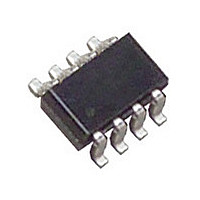LT3092ITS8#PBF Linear Technology, LT3092ITS8#PBF Datasheet - Page 9

LT3092ITS8#PBF
Manufacturer Part Number
LT3092ITS8#PBF
Description
Manufacturer
Linear Technology
Datasheet
1.LT3092ITS8PBF.pdf
(22 pages)
Specifications of LT3092ITS8#PBF
Operating Temperature (max)
125C
Operating Temperature (min)
-40C
Pin Count
8
Mounting
Surface Mount
Package Type
TSOT-23
Case Length
2.9mm
Screening Level
Automotive
Lead Free Status / Rohs Status
Compliant
Available stocks
Company
Part Number
Manufacturer
Quantity
Price
From this point, selecting R
forward calculation from R
errors must be accounted for as well. While larger voltage
drops across R
also increase the required operating headroom.
Obtaining the best temperature coeffi cient does not require
the use of expensive resistors with low ppm temperature
coeffi cients. Instead, since the output current of the LT3092
is determined by the ratio of R
should have matching temperature characteristics. Less
expensive resistors made from the same material will
provide matching temperature coeffi cients. See resistor
manufacturers’ data sheets for more details.
Stability and Frequency Compensation
The LT3092 does not require input or output capacitors
for stability in many current-source applications. Clean,
tight PCB layouts provide a low reactance, well controlled
operating environment for the LT3092 without requiring
capacitors to frequency-compensate the circuit. The front
page Typical Application circuit illustrates the simplicity
of using the LT3092.
Some current source applications will use a capacitor
connected in parallel with the SET pin resistor to lower
the current source’s noise. This capacitor also provides a
soft-start function for the current source. This capacitor
connection is depicted in Figure 7 (see the Quieting the
Noise section).
When operating with a capacitor across the SET pin resis-
tor, external compensation is usually required to maintain
stability and compensate for the introduced pole. The
following paragraphs discuss methods for stabilizing
the LT3092 for either this capacitance or other complex
impedances that may be presented to the device. Linear
Technology strongly recommends testing stability in situ
with fi nal components before beginning production.
Although the LT3092’s design strives to be stable without
any capacitors over a wide variety of operating conditions,
it is not possible to test for all possible combinations of
input and output impedances that the LT3092 will encounter.
These impedances may include resistive, capacitive and
APPLICATIONS INFORMATION
SET
minimize the error due to offset, they
SET
OUT
. Take note, however, resistor
SET
is easy, as it is a straight-
to R
OUT
, those resistors
inductive components and may be complex distributed
networks. In addition, the current source’s value will dif-
fer between applications and its connection may be GND
referenced, power supply referenced or fl oating in a signal
line path. Linear Technology strongly recommends that
stability be tested in situ for any LT3092 application.
In LT3092 applications with long wires or PCB traces, the
inductive reactance may cause instability. In some cases,
adding series resistance to the input and output lines (as
shown in Figure 2) may suffi ciently dampen these possible
high-Q lines and provide stability. The user must evaluate
the required resistor values against the design’s headroom
constraints. In general, operation at low output current
levels (< 5mA) automatically requires higher values of
programming resistors and may provide the necessary
damping without additional series impedance.
If the line impedances in series with the LT3092 are
complex enough such that series damping resistors are
not suffi cient, a frequency compensation network may be
necessary. Several options may be considered.
Figure 2. Adding Series Resistor Decouples
and Dampens Long Line Reactances
LT3092
SET
R
SET
10μA
+
–
IN
R
R
LONG LINE
REACTANCE/INDUCTANCE
LONG LINE
REACTANCE/INDUCTANCE
SERIES
SERIES
OUT
R
OUT
3092 F02
LT3092
3092fb
9













